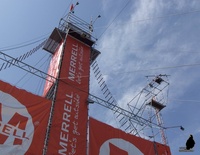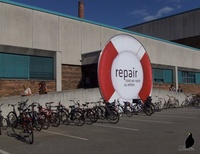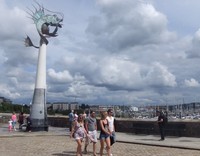Photosynth was originally created to process independent snapshots of a location and project them in a reconstructed 3D space - so you can 'walk' through the scenery and view the photos from their respective location (the original name was fittingly called 'Photo Tourism'). The panorama feature - which was added back in March - closed the gap between a single image and a 3D scenery, but only through ICE, a tool for automated panorama creation.
With the new plugin, you can use every tool you like to create your panoramas (even gigapixels and partial panoramas), load them in Photoshop and directly export them to Photosynth.
How to install:
- Download the plugin here
- Extract the file and copy the file(s) into Photoshop's "import/export" directory, e.g. "C:\Program Files\Adobe\Adobe Photoshop CS5 (64 Bit)\Plug-ins\Import-Export" for the 64bit plugin.
How to use:
- Load your panorama in Photoshop
- Go to 'File'-'Export'-'Photosynth'
- If you are lucky and your favorite panorama editor has the necessary EXIF data included, you will be directly forwarded to the uploader. If not, you'll be faced with a dialog box asking for the extents of the panorama:
- In case you have to specify the extents: The values are pretty straightforward. The tricky thing may be a horizon that is not in the center of the image. In that case, you have to define the position of the horizon between 0 and 1:
- In a final step, you are presented with the Photosynth uploader dialog where you can specify the usual metadata for your image. After upload, don't forget to open the panorama on the Photosynth website where you can add geodata and define highlights in your panorama (a cool feature to annotate your gigapixel):













